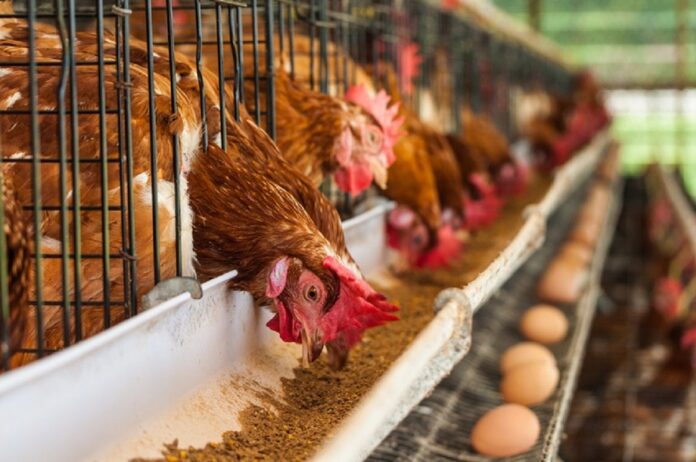Poultry is an important source of protein patronized by most people irrespective of their religious backgrounds. Poultry species commonly raised for commercial purposes are fowls/chickens. They are categorized as broilers and layers for meat and egg production respectively.
Poultry layer production
Layers are species of chicken primarily kept for egg production. They start laying from the 18th-20th week and continue for 50-52 weeks when laying percentage drops and keeping the birds becomes commercially not economical. At this stage, the birds are sold for meat.
Read also: Expert Guide to Broiler Production and Management
Management of Layers
Commercial poultry layer production is commonly managed under an intensive system. The Preferred housing is the deep litter fixed with cages for laying.
Floor Space Requirement for Birds
| Age in weeks | Ft.sq/bird | M.sq/bird | Birds/m.sq | |
| Starter | 0-6 | 0.6 | 0.06 | 17.8 |
| Grower | 7-20 | 1.5 | 0.14 | 7.1 |
| Layer | 21-72 | 1.25 | 0.11 | 9.0 |
The grower stage is 7-20 weeks of age. Birds can be reared in one house throughout the brooding, growing and laying periods. Floor space is as recommended in the table above. The house can be partitioned and adjusted according to the space requirement.
Water space (water trough)
Chicks require 1.3-1.5cm/chick (0.5-0.6 inches) of trough space. As chicks grow, that is from 4 weeks, space must be increased to 2cm/bird 90.8 inches) of trough space at the grower stage and to 3.2cm. (1.25inches) at layer stage.
Feeder space (feed trough)
Chicks require 5m (2 inches)/chick of trough space. As chicks grow, space must be increased to 7.6 cm. (3 inches) of trough space per bird at the grower stage and 10.5cm. (4inches) at layer stage.
Read also: Detailed Guide to Pig Production and Management in Ghana
How to prepare chicks
Chicks are brooded in a hygienic environment for 2-3 weeks to avoid infections.
Steps to follow
- Clean and disinfect the brooder house 1-2 weeks before birds arrive
- Wash and disinfect water/feed troughs and brooder guard
- Clean and remove weeds and debris outside the house
See also: Chicken Embryo Development: An Amazing video illustration
How to receive chicks
We have covered that in detail in How to Receive Day-Old Chicks (DOCs) into Brooder House.
Raising of birds
Birds are transferred from the brooder house to the grower house/pen at 6-7 weeks of age and to the layer house at 18-20 weeks of age. At the layer house, cage/nest measuring 31 cm wide (1ft) by 31cm high (1 ft.) per compartment are placed at various points for laying. The nests are placed in the house before birds start laying. Birds are debeaked at 8 days old. This is done to avoid pecking and cannibalism among chickens.
Biosecurity measures
Wash water troughs with clean water and detergent daily. Provide a foot bath with disinfectant at the doorstep. The poultry house and feed storage area should be kept free of rodents and wild birds. There should be good aeration and light in all poultry houses. Avoid wet litter conditions as this promotes the growth of infectious diseases.
Read also: 7 Tips on Profitable Farming with Good Records Keeping
Feeding
There are 3 types of feed for layers: starter mash, grower mash and layer mash.
Sample of feed
| Ingredient | Chick starter (in kg) | Grower mash (in kg) | Layer mash (in kg) |
| Maize | 60 | 50 | 50 |
| Fishmeal | 15 | 10 | 12.5 |
| Soya bean | 12 | 5 | 7.5 |
| Wheat bran | 12 | 30 | 20 |
| Oyster shell | 1 | 5 | 10 |
| Salt | 0.1 | 0.15 | 0.25 |
| Vitamin premix | 0.25 | 0.25 | 0.25 |
| di-calcium | 0.1 | 0.1 | 0.1 |
| Total | 100.45 | 100.5 | 100.6 |
Vaccination regime
We have covered that in detail in the Poultry Vaccination Schedule For Commercial Poultry Production.
Source: http://mofa.gov.gh
Featured Image Source: Farmstocking


